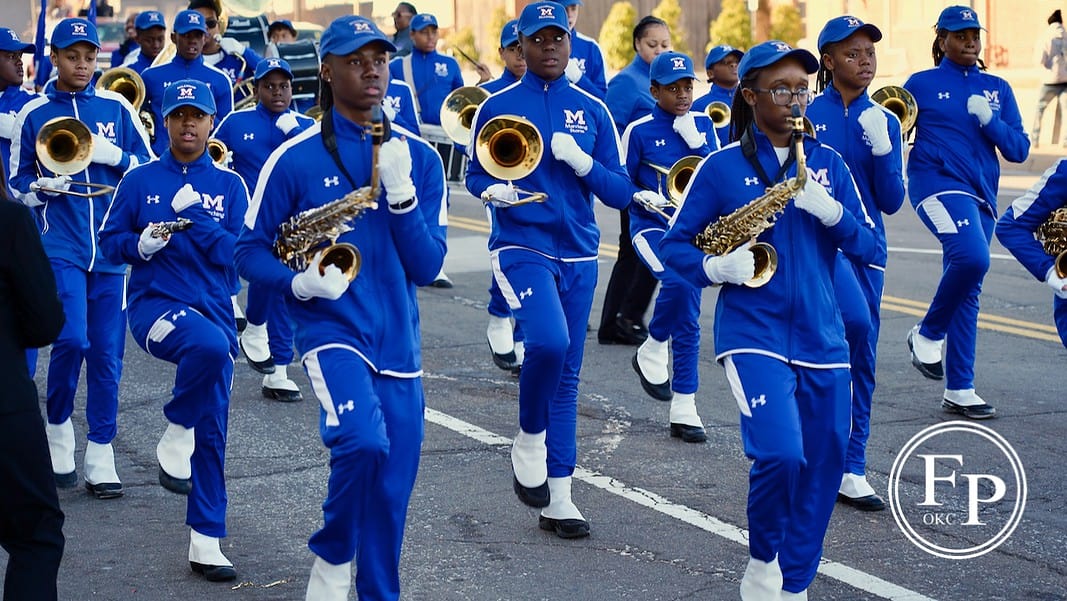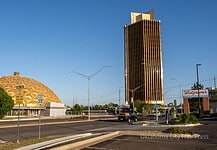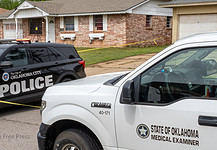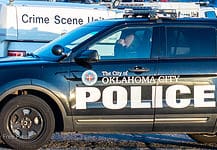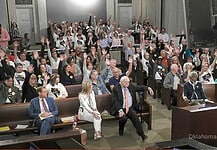Last Updated on January 21, 2020, 10:45 PM | Published: January 21, 2020
From the silent march in the morning to the ringing of the bell to the program at noon and the afternoon parade, youth numbers dominated all activities of Martin Luther King Jr. Day.
Oklahoma City Public Schools took the day off as did many of the charter and private schools in the metro.
Some teachers organized voluntary involvement by their students.
Silent March
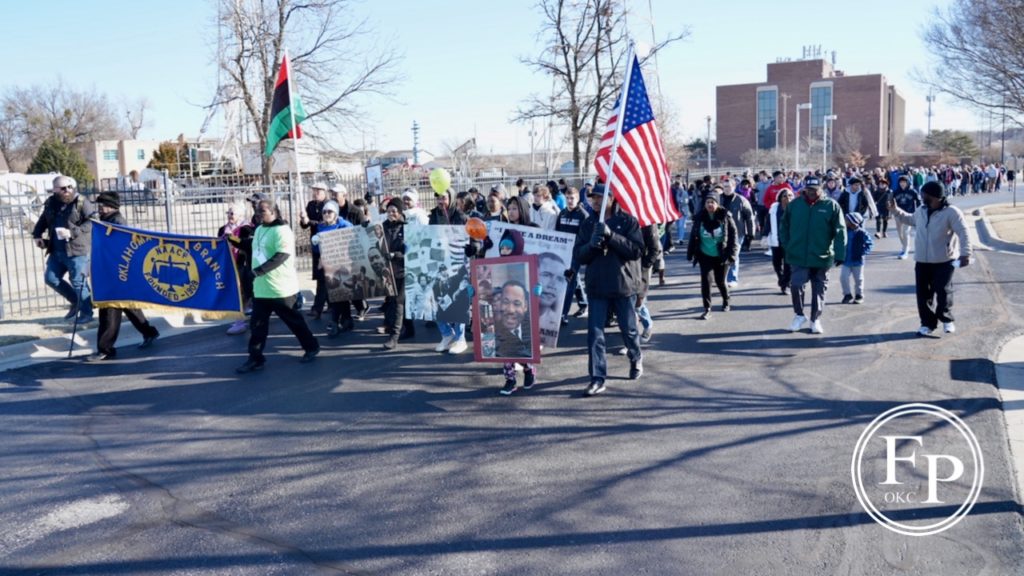
At least half if not 75% of the silent marchers were youth or young adults.
One of the young adults was JoBeth Hamon who represents Ward 6 on the Oklahoma City Council.
She said that every year since she moved to Oklahoma City she has participated in the Silent March.
“The fact that it starts with the Freedom Center, which is kind of the home of the Civil Rights Movement in Oklahoma City is significant,” Hamon said.
“It’s a nice opportunity to connect to the community that was part of that movement,” she said. “And I think for me, it’s a more meaningful way to hear from people who were part of the sit-in movement in the 60s.”
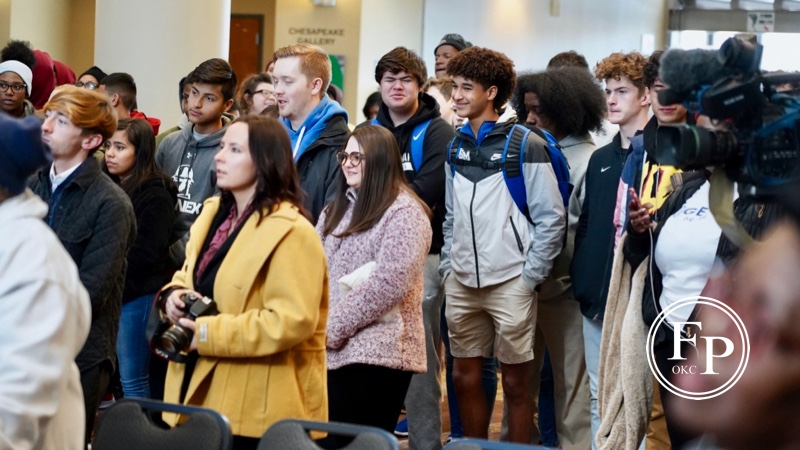
But it’s not just out of a desire to connect with Oklahoma City’s past of struggling with racial prejudice and segregation.
Hamon said that she is also interested in staying connected with that history but staying connected with the present as MAPS 4 makes plans to rebuild the Freedom Center and establish a home for the Clara Luper Civil Rights Center.
50 years from now
Free Press talked with Hamon about what it meant as an Oklahoma City Council member to be involved in the Silent March since some white council members at the time of the first sit-ins were openly hostile and critical of the desegregation attempts.
She was reluctant to criticize those council members 50 years ago.
“I would hope that if similar things were happening now, that our council would be supportive of efforts to desegregate,” said Hamon.
And she brought that up to the present day with taking a stand on issues before the council now.
“I probably am maybe a little alone in seeing efforts for criminal legal reform and some of those things as what we should be doing and that 50 years from now the Council is going to be looking at us and saying, “Why didn’t you push harder for those?”
Bell-ringing

Teens were in abundance as the Silent March ended and moved inside the History Center on N.E. 23rd to hear from Governor Kevin Stitt.
Then, as is the tradition each year, the youngest children are honored as the future by having them ring the freedom bell outside the History Center.
Panel discussion
At the noon program at St. Paul’s Episcopal Cathedral close to the parade route at least 75% of those who were there to hear the panel of those who were either involved in the sit-ins or those who were students that were involved in the very first bussing plan were students.
The panel discussed what it meant then and what it might mean now to engage in confronting racial prejudice and racist societal structures.
Parade
As if to juxtapose the generations, the original sit-inners were in the lead cars of the parade and then the traditionally black eastside high school bands followed close behind.
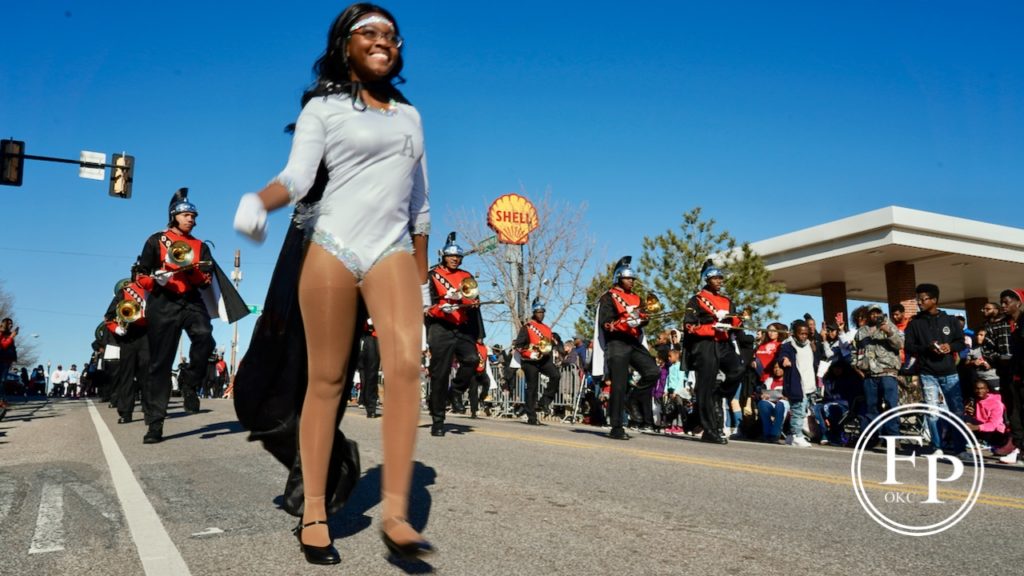
The Douglass High School “Pride of the East Side” Marching Band was the first high school band in the parade. Douglass was the first black high school in legally-segregated Oklahoma City and even after desegregation continued to be a central connection for black people in Oklahoma City.
Millwood High School Marching Band came soon after. Millwood started transitioning to a predominantly African American population in the 1970s as more black parents began to purchase homes in the Millwood District on the Northeast corner of Oklahoma City.
Founder, publisher, and editor of Oklahoma City Free Press. Brett continues to contribute reports and photography to this site as he runs the business.
